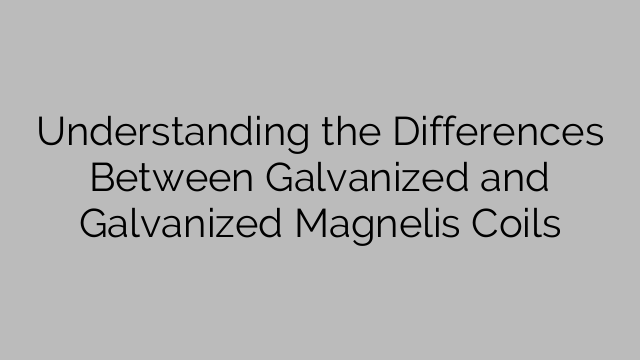When it comes to choosing the right type of steel coils for your project, it’s important to understand the differences between galvanized and galvanized Magnelis coils. Both options offer protection against corrosion and are used in a variety of industrial applications, but they have distinct characteristics that make them suitable for different needs. Here’s a closer look at the differences between these two types of steel coils.
Galvanized coils are steel coils that have been coated with a layer of zinc to protect them from corrosion. This process, known as galvanization, involves immersing the steel coils in a bath of molten zinc, which forms a protective layer on the surface of the steel. Galvanized coils are commonly used in construction, agriculture, and automotive applications, where they provide excellent protection against rust and corrosion.
On the other hand, galvanized Magnelis coils are a newer and more advanced type of steel coil. Magnelis is a metallic coating that is applied to steel coils using a hot-dip process similar to galvanization. However, the Magnelis coating contains a higher percentage of zinc, as well as additional elements such as magnesium and aluminum. This unique combination of metals provides enhanced corrosion protection and improved durability compared to standard galvanized coatings.
One of the key differences between galvanized and galvanized Magnelis coils is their level of corrosion resistance. While both types of coatings provide excellent protection against rust and corrosion, the Magnelis coating offers superior performance in harsh environments, such as coastal areas or industrial settings with high levels of pollution. This makes galvanized Magnelis coils a preferred choice for outdoor and high-corrosion applications where maximum protection is required.
In addition to its enhanced corrosion resistance, galvanized Magnelis also offers improved scratch and impact resistance. This makes it a suitable option for applications that require a high level of durability, such as agricultural equipment, outdoor infrastructure, and industrial machinery. The added strength and resilience of galvanized Magnelis coils translate to longer service life and reduced maintenance costs for the end-user.
Another important factor to consider when comparing galvanized and galvanized Magnelis coils is their cost. Galvanized Magnelis coils typically come at a higher price point compared to standard galvanized coils due to the additional elements and advanced technology used in the coating process. However, the long-term benefits of improved durability and corrosion resistance may outweigh the initial investment, especially in applications where the steel coils are exposed to harsh conditions.
In conclusion, while both galvanized and galvanized Magnelis coils offer effective protection against corrosion, the latter provides a higher level of performance and durability. Understanding the differences between these two types of steel coils can help you make an informed decision when selecting the best option for your specific application. Whether you need reliable protection for outdoor structures, industrial equipment, or agricultural machinery, galvanized Magnelis coils are a superior choice for long-lasting and cost-effective corrosion protection.

